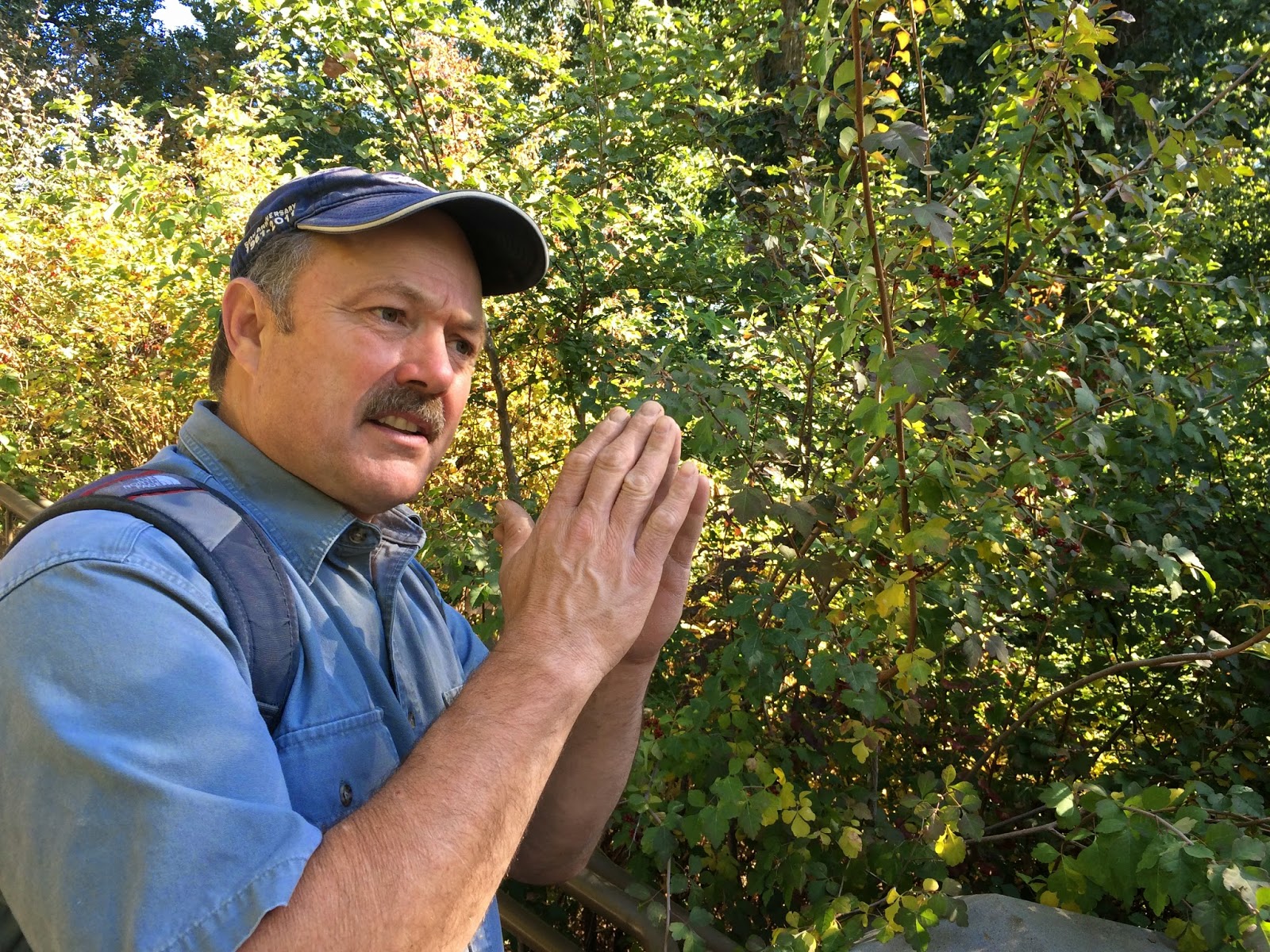

 Dr.
Clark had Colton, Michelle and Mary who are educators from the Monte L.
Bean Museum, hand out viles and forceps for the students to collect
insects. Dr. Clark had two students brave the cold hobble creek fitted
with boots and nets to capture aquatic insects. One student would kick
at the stream-bed and stir things up and the other would hold the net
downstream and collect debris. Then this would be brought back to the
riverbank and the students would pick through river debris and find
various insects as well as other arthropods. Insects like caddisflies,
stone flies as well as annelids or worms like earthworms and leeches
were found. One of the students found North America's largest stone fly,
Pteronarcys Californicus or the Giant Salmon fly.
Dr.
Clark had Colton, Michelle and Mary who are educators from the Monte L.
Bean Museum, hand out viles and forceps for the students to collect
insects. Dr. Clark had two students brave the cold hobble creek fitted
with boots and nets to capture aquatic insects. One student would kick
at the stream-bed and stir things up and the other would hold the net
downstream and collect debris. Then this would be brought back to the
riverbank and the students would pick through river debris and find
various insects as well as other arthropods. Insects like caddisflies,
stone flies as well as annelids or worms like earthworms and leeches
were found. One of the students found North America's largest stone fly,
Pteronarcys Californicus or the Giant Salmon fly. As the sun climbed higher over the canyon walls the air began to feel warmer and it was time to get out the sweeping and aerial nets to capture terrestrial insects. Once again Dr. Clark demonstrated the proper netting techniques and students went off in every direction capturing insects from wasps to crickets and arachnids like daddy long legs were caught. Did you know that some things we call daddy long legs are not actually spiders and are not venomous!? If you see a spider like creature crawling around that had an unsegmented body, it is not actually a spider but a Harvestman for the common folk but in the scientific community they are called Opiliones, which are cousins to spiders.
Dr.Clark was able to show all the importance of insects for all ways of life, from the food we eat to the decomposition of materials and even medicine. Insects are the most abundant and diverse group of organisms on the planet. For some increased understanding about the insects that surround us helps to make them not so creepy anymore. We may have a hard time living with them but we certainly would not be able to live without them.
post by: Colton









